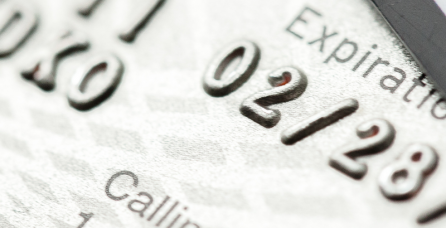Has your bank ever asked you to undergo a re KYC?
Buying a new house or taking out a loan are some of the instances that would trigger a requirement to update a customer’s KYC. But, what is re KYC and the process involved in it? Let’s have a look.
What is re KYC? Â
Re-KYC refers to the measure taken by banks to ensure that a customer’s details like documents, contact information, etc. collected at the time of bank account opening are up to date.Â
This is done at regular intervals as per RBI guidelines. Banks are required to take a risk-based approach for the same. Customers are categorized based on factors such as their identity, social status, financial status, nature of their business activity, information about their business, and location among other things. They are classified into the following categories:Â
High-Risk Customers: For high-risk customers, the banks would perform the updation process once every two years. A high-risk customer will need to visit their nearest bank branch to submit fresh identity, KYC, and address documents.Â
Medium-Risk Customers: The bank will carry out the updation process once every eight years for medium-risk customers. Similar to a high-risk customer, a medium-risk customer will also have to physically visit their bank to submit their documents.Â
Low-Risk Customers: For low-risk customers, the banks will conduct the updation process once every ten years. However, a low-risk customer may not be required to visit their bank in person for re-KYC. If there are no changes in address, a low-risk customer’s KYC can be updated through the following methods: Â
- Internet BankingÂ
- The Bank’s Mobile ApplicationÂ
- Re-KYC updation link provided through the customer’s registered email id
- Re-KYC updation link provided through the customer’s registered mobile number
- SMS
- ATMs
In case there is a change in the address, the new address will be collected from the customers’ registered email id or mobile number, ATMs, internet banking, or mobile application. The declared/new address will be verified within two months, through an address verification letter, contact point verification, deliverables, etc.Â
In case the customer was a minor at the time of their account opening, their re-KYC would be performed upon their becoming a major. Their bank needs to obtain a fresh photograph and make sure their Customer Due Diligence (CDD) documents are up to date as per the current CDD standards. If required, the bank would carry out a fresh KYC for such customers.Â
What does the re-KYC process look like?Â
Step 1 – Filling the Declaration FormÂ
Upon receiving a notification from the bank to update their KYC, the customer needs to fill out a re-KYC form with their personal information.
Here is an example of what a re-KYC form for individual customers looks like:

Step 2 – DocumentationÂ
Next, the customer needs to self-attest copies of acceptable identity and residential proof that will be submitted along with the re-KYC form.Â
Here is the list of acceptable documents for individual customers:Â
Acceptable documents for establishing proof of identity:Â
- Valid Passport
- Â PAN card
- Â E-Aadhaar letter downloaded from UIDAI site/Aadhaar card issued by the government of India.Â
- Valid Permanent Driving licenseÂ
- Election Card / Voter’s ID cardÂ
- Job card issued by NREGA duly signed by an officer of the State GovernmentÂ
- Letter issued by a Gazette officer, with a duly attested photograph of the person Acceptable only for opening low risk Basic Savings Bank Deposit Account (BSBDA)Â
Acceptable documents for establishing address:Â
- Valid Passport
- Â PAN Card
- Â Valid Permanent Driving license (Except driving license issued by the Govt of Maharashtra)Â
- Election/ Voter ID card (if it has an address)Â
- E-Aadhaar letter downloaded from UIDAI site/ Aadhaar card issued by the government of India.Â
- Job Card issued by NREGA, duly signed by an officer of the State Government
-  Letter issued by a Gazette officer, with a duly attested photograph of the person Acceptable only for opening low-risk “Basic Savings Bank Deposit Account†(BSBDA)Â
- Identity card issued by Central/State Government, Public sector undertaking, any Scheduled Commercial Bank, or any Public Financial Institution for their employees is also acceptable.Â
Step 3 – ProcessingÂ
It takes about 10 days for the re-KYC process to be completed once the documents and form are submitted.Â
For Non-Individual CustomersÂ
They will be required to visit the bank branch physically to submit the completed re-KYC form with the appropriate documents.Â
For NRI customersÂ
They must email the re-KYC form and attested documents to the branch through their registered email address.
Re-KYC through Video Process:Â
An individual customer above the age of 18 with a valid Indian address proof can do the re-KYC process via video as mandated by the RBI. It is called V-CIP (video-based customer identification procedure).Â

One needs a mobile phone or desktop with a camera, microphone access, and internet connection along with their PAN Card and Aadhaar Card to do the re-KYC process via video. Once the customer enters their basic information, a bank official will conduct the necessary checks through video interaction and guide them through the rest of the process.
Doing the re-KYC process through video was only made available for all individual customers very recently by a landmark notification released by the RBI on 5th May, 2021. You can read about the benefits of using video for ReKYC here.Â
What do YOU need to perform your customer’s re-KYC through video?Â
You need a video service platform that examines the quality of your customer’s existing KYC documents, extracts document details, and generates capture links for customers eligible for re-KYC. Luckily, IDfy’s video services platform checks all the boxes. You can read more about how IDfy can help here.Â
To know more about KYC in India, cKYC, video KYC, and more, click here.



